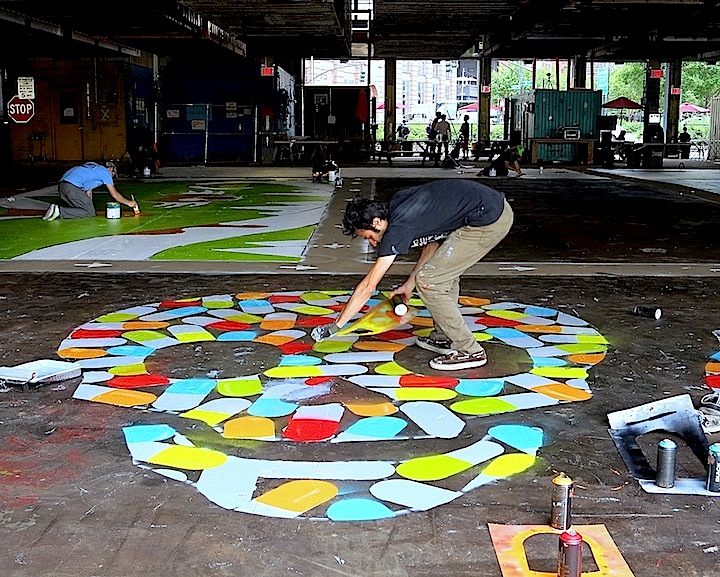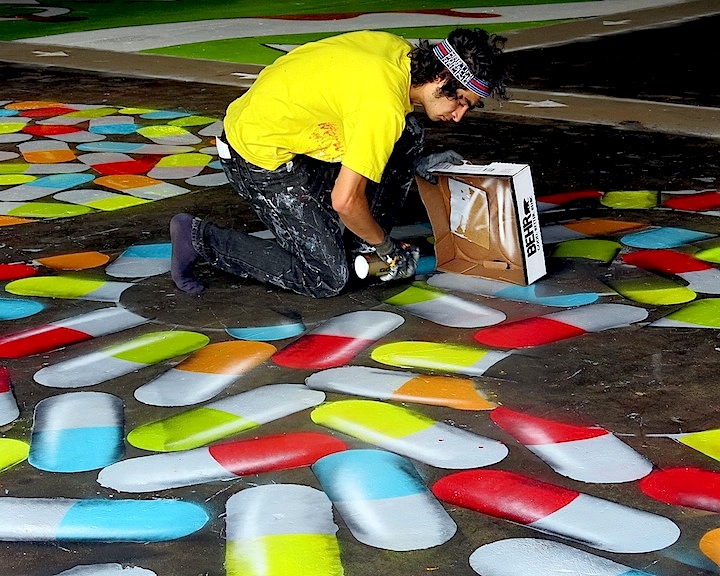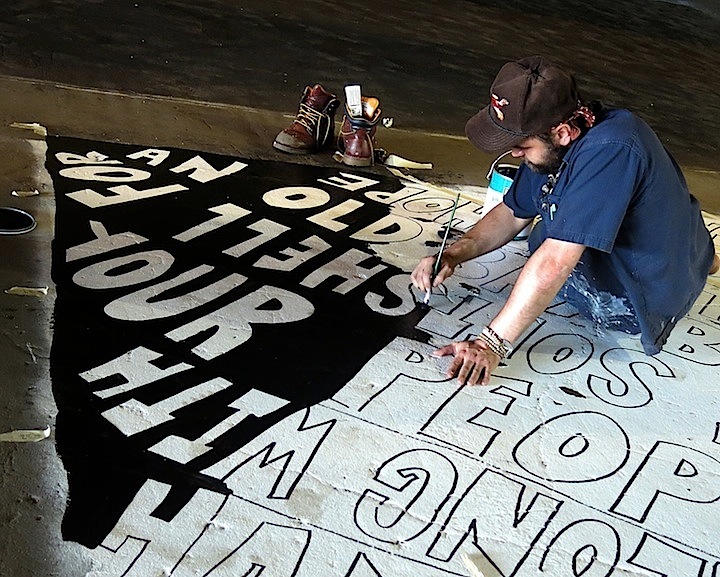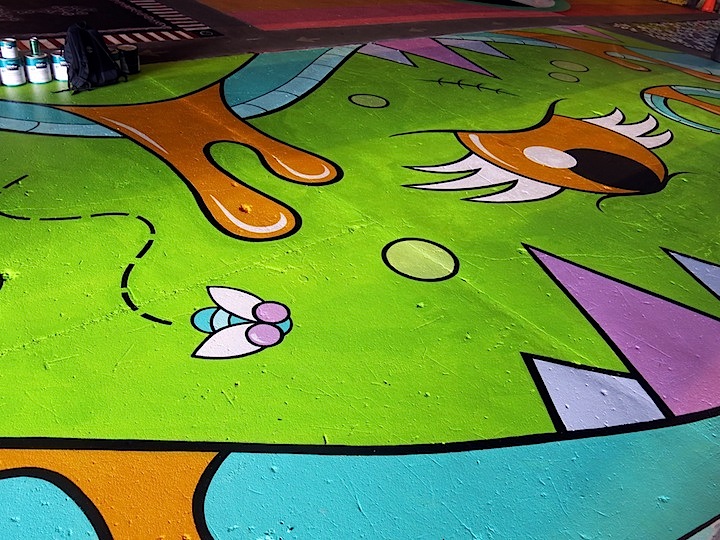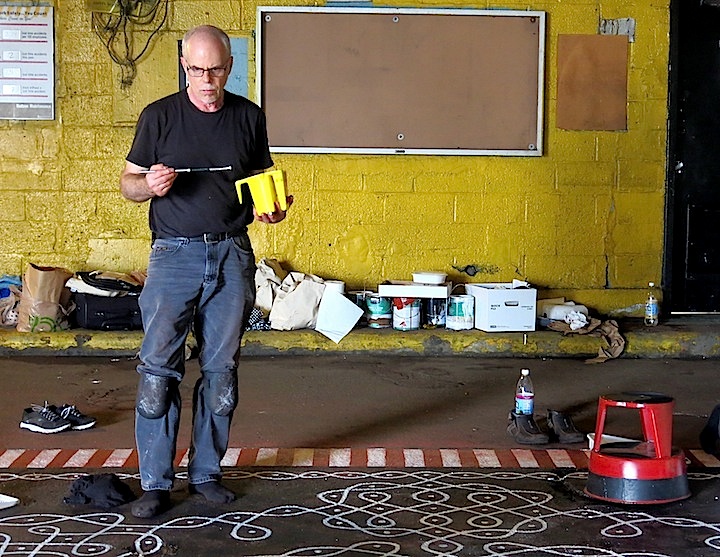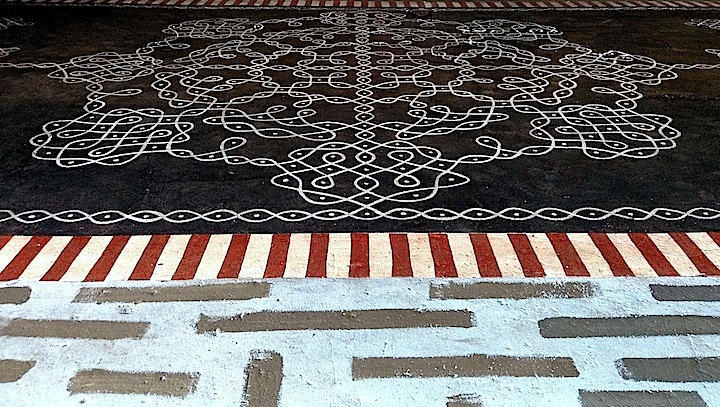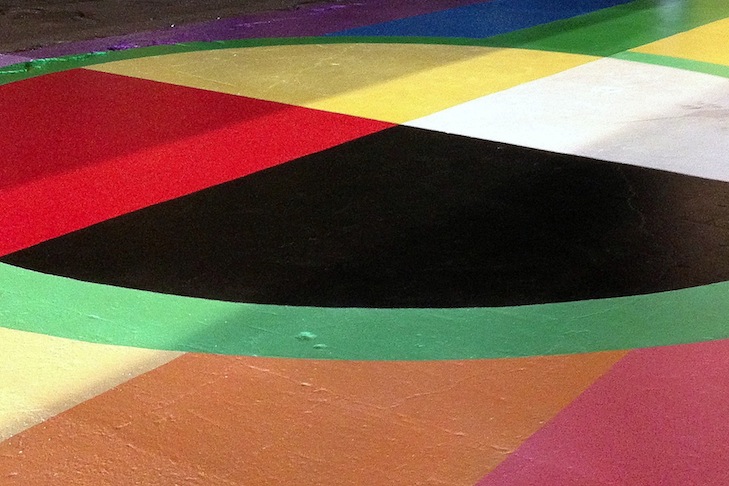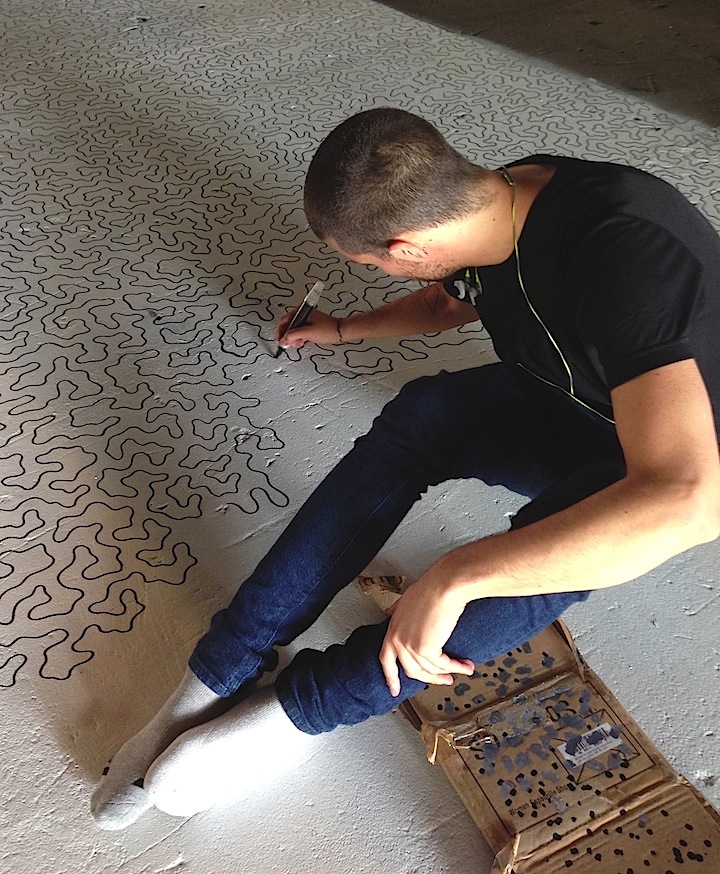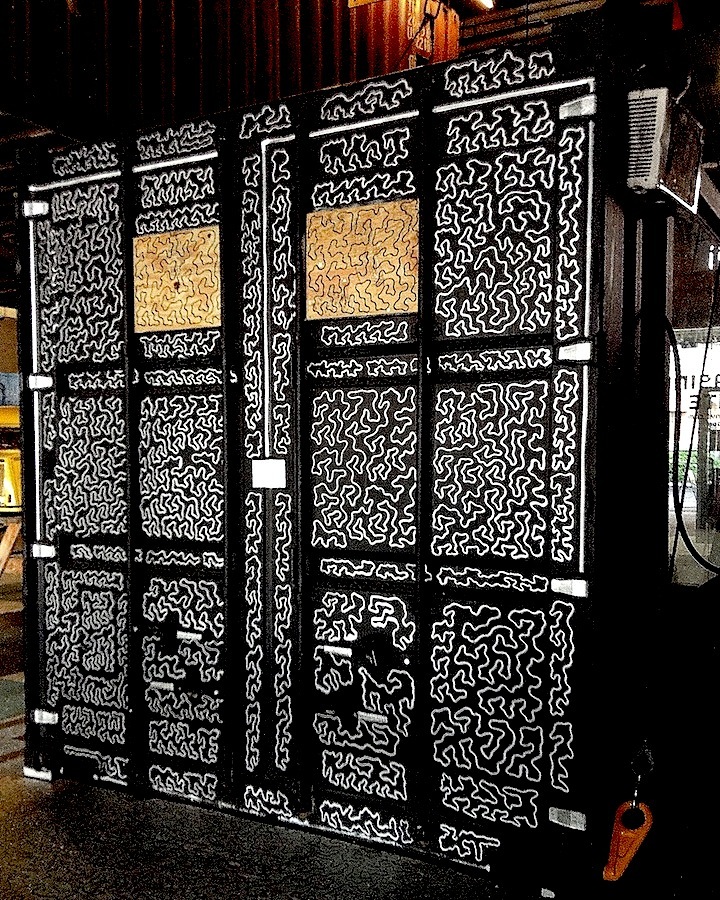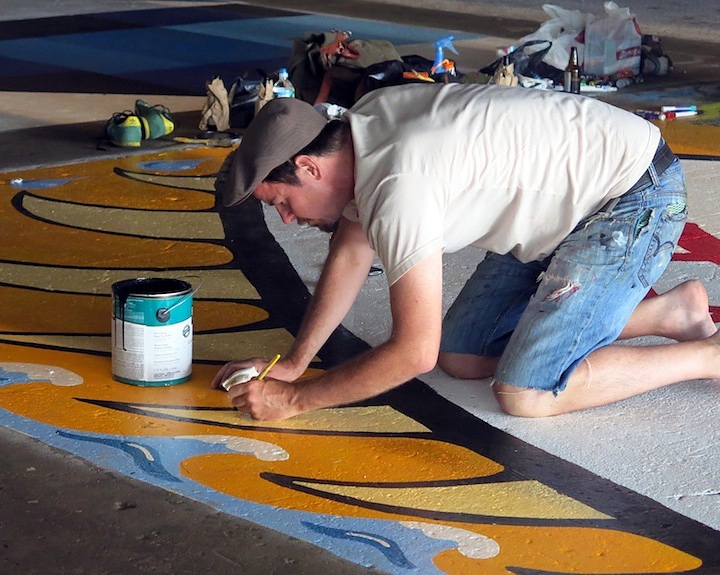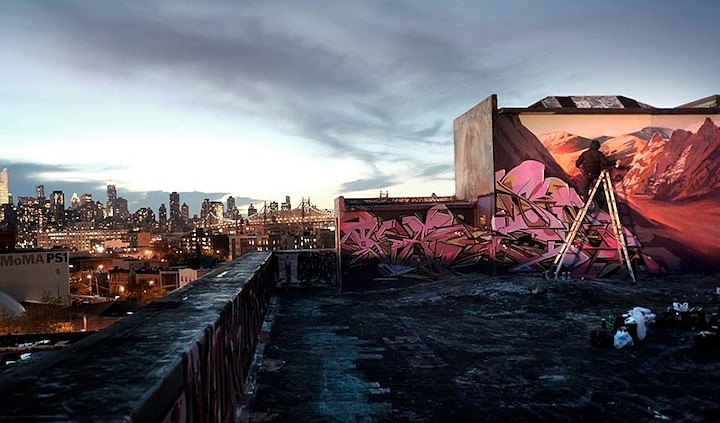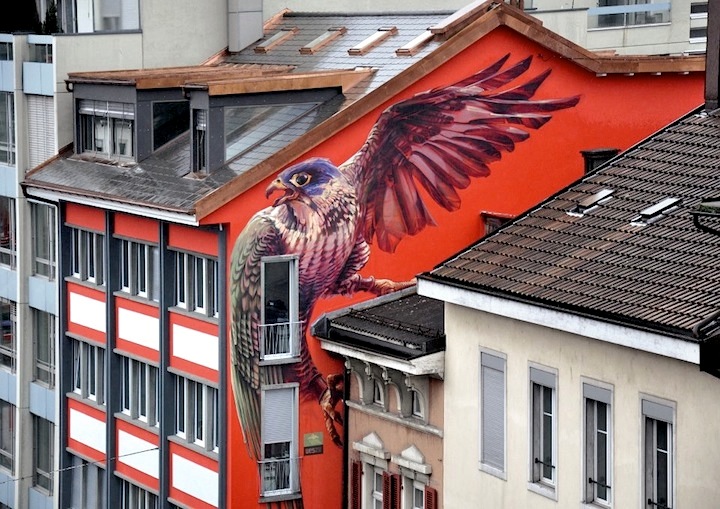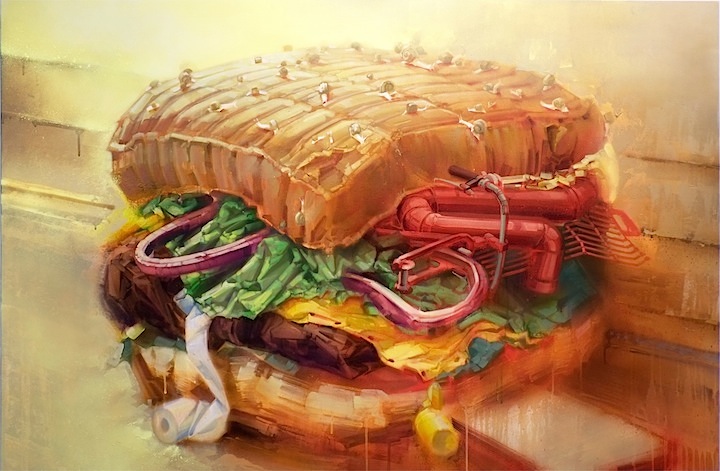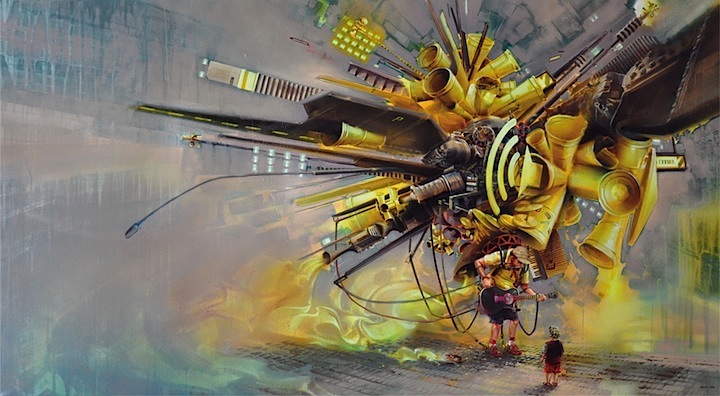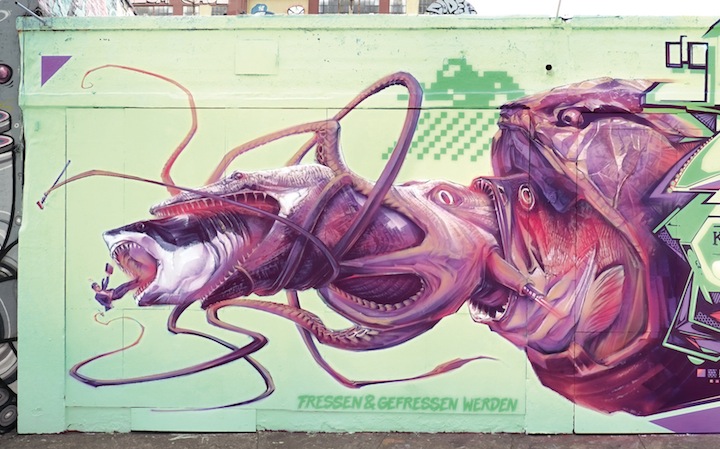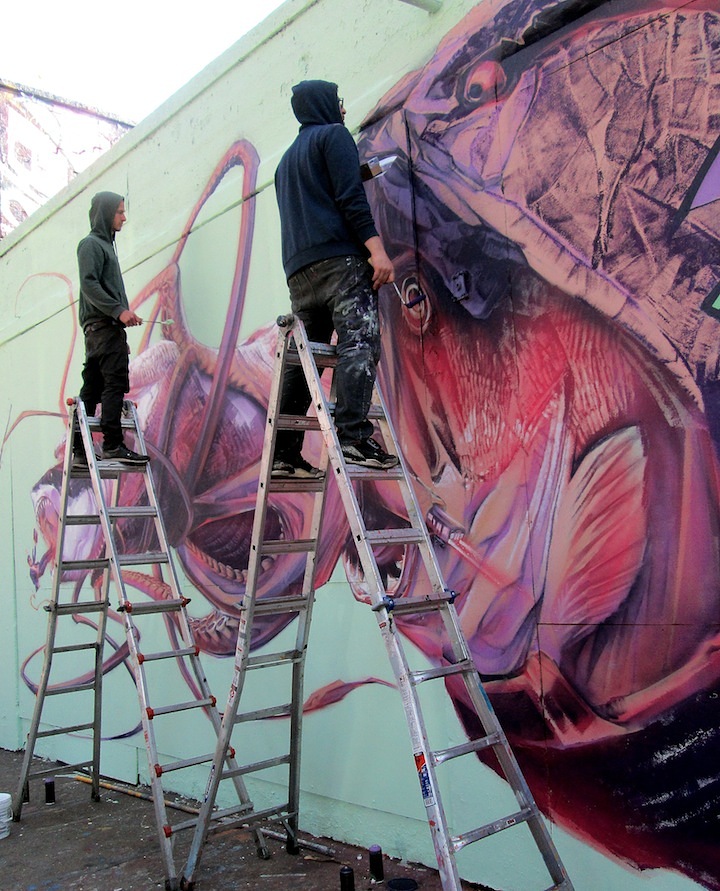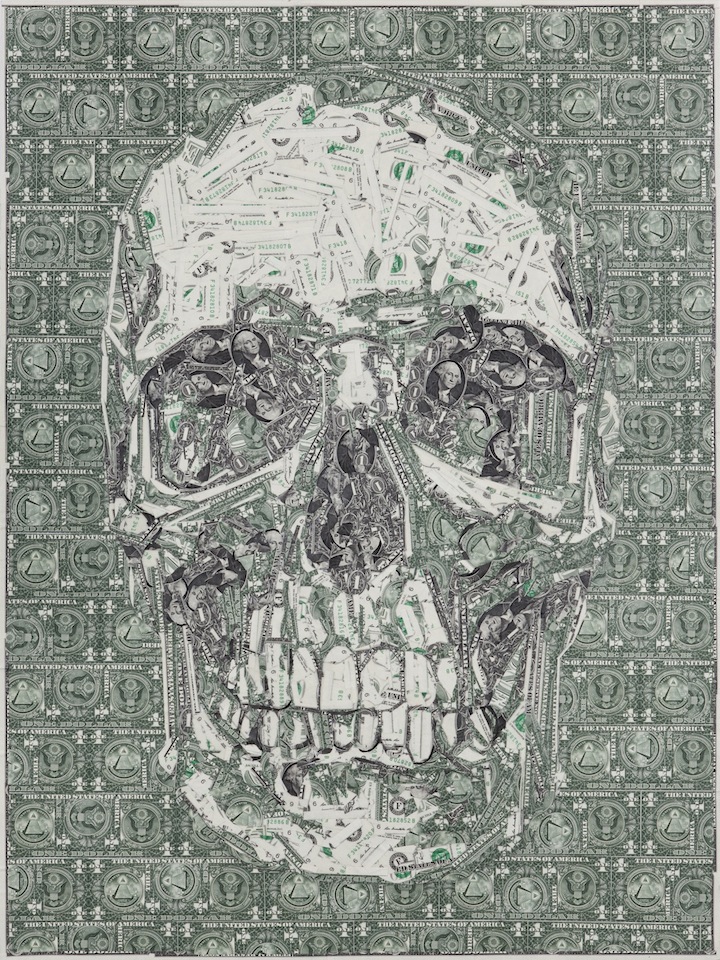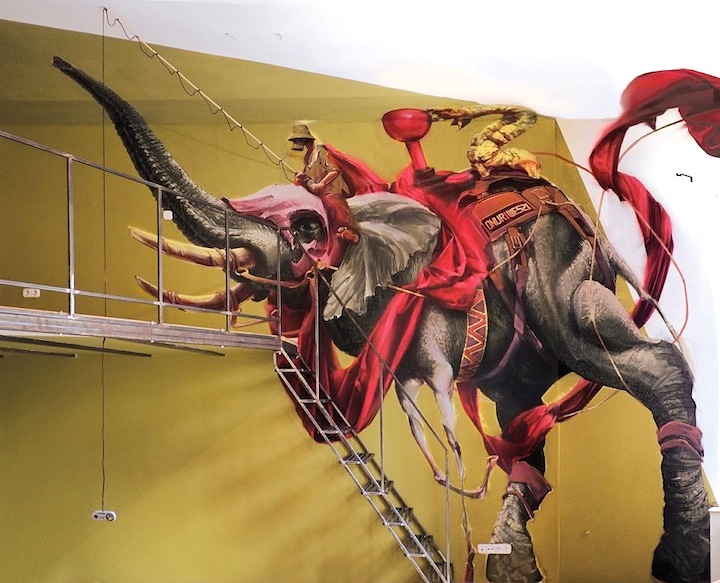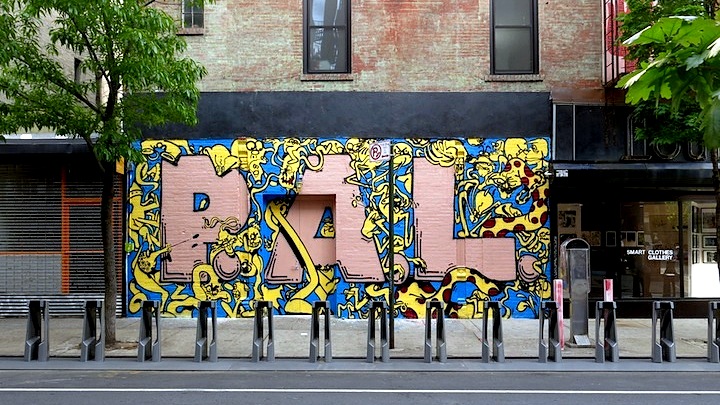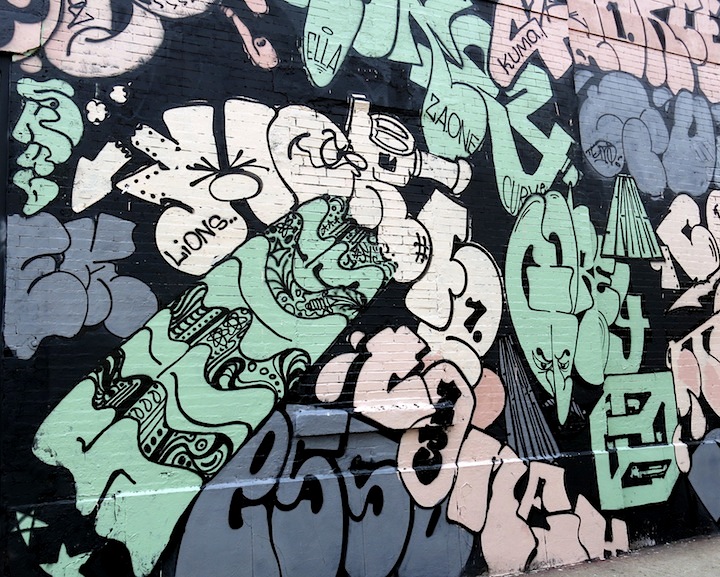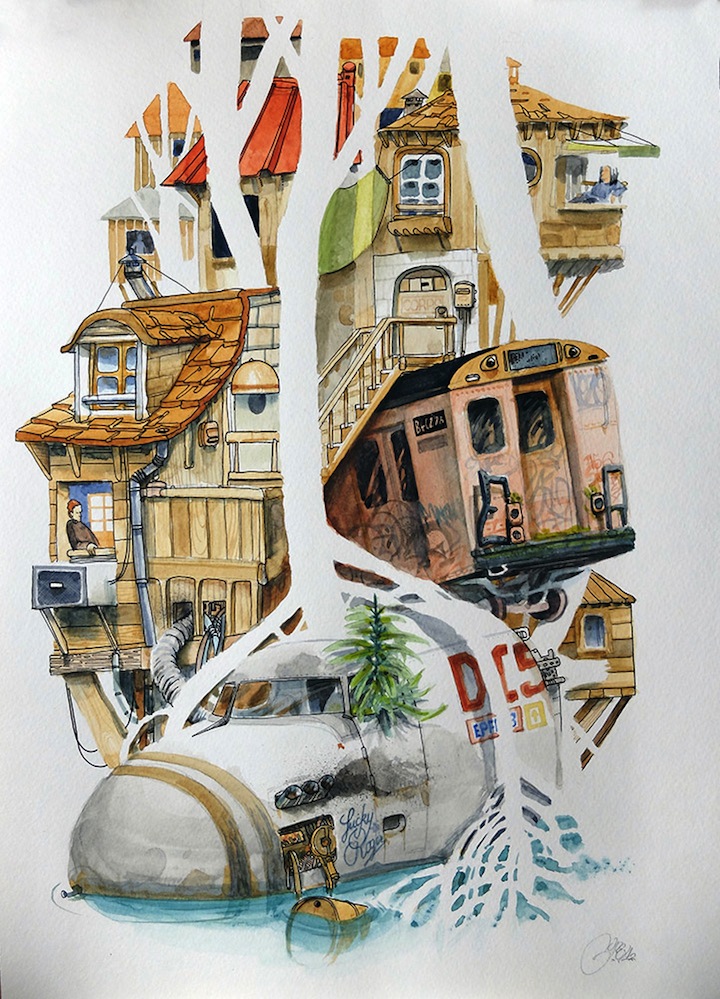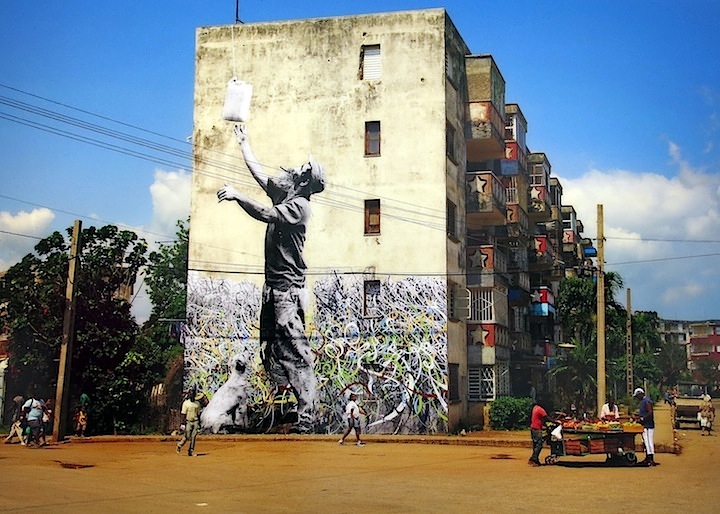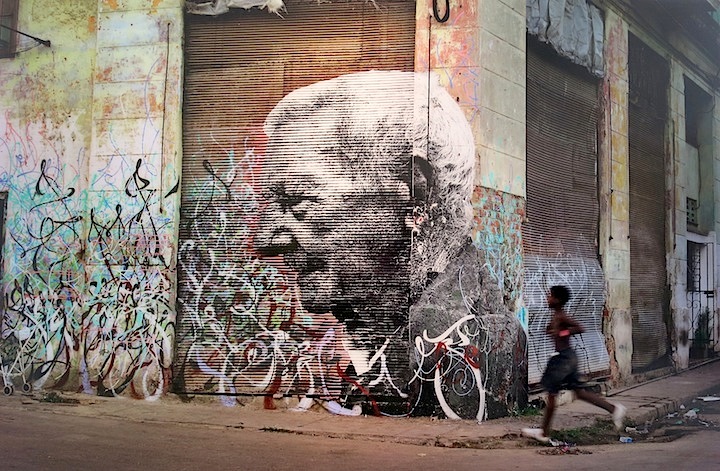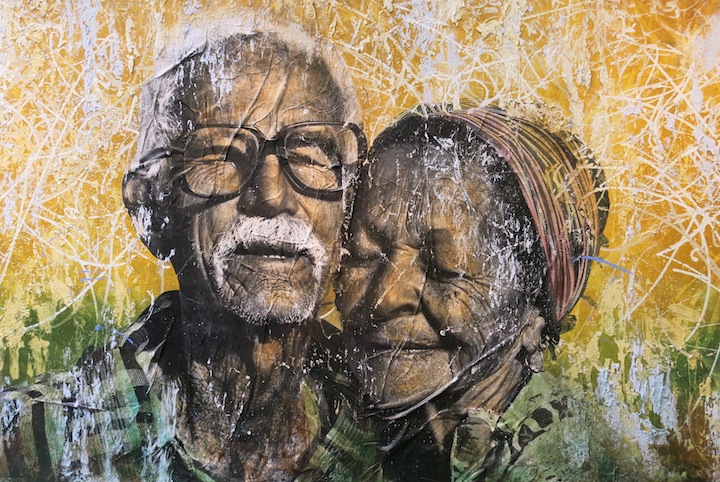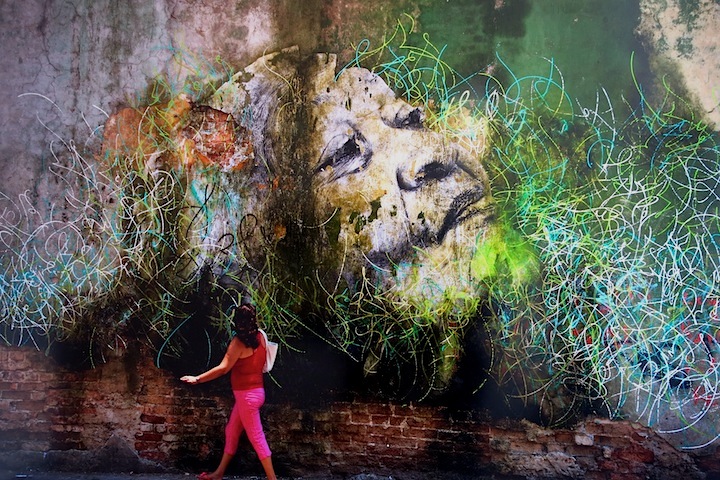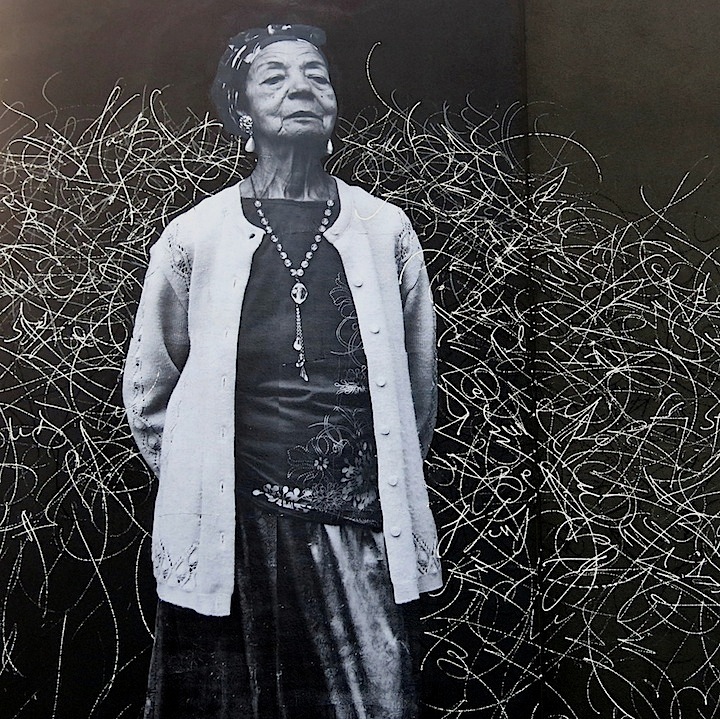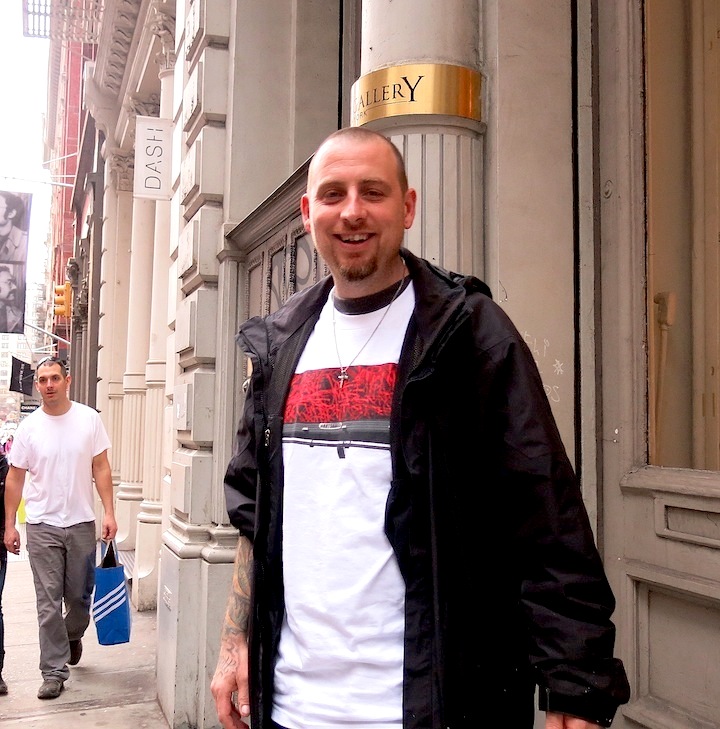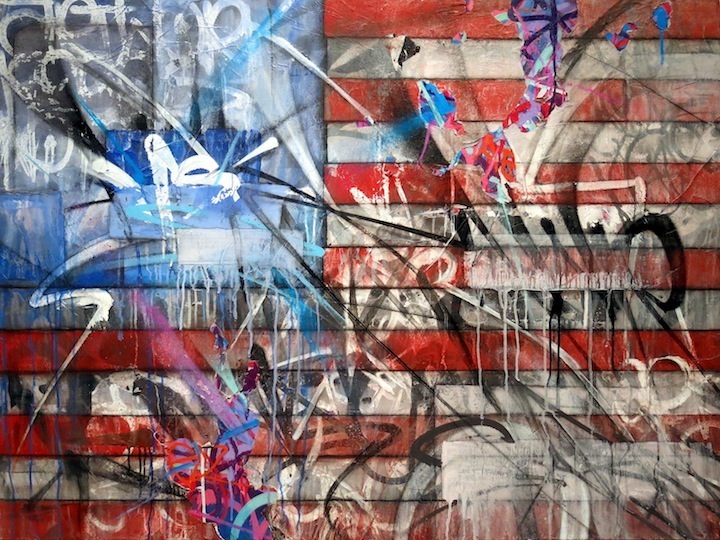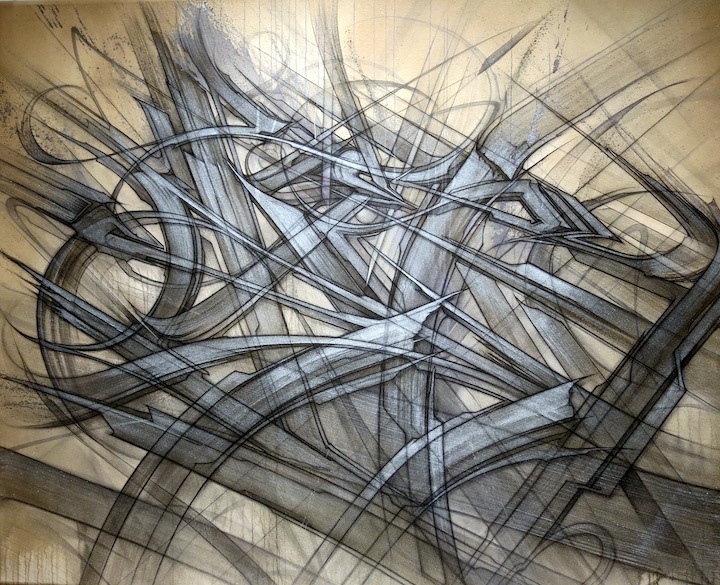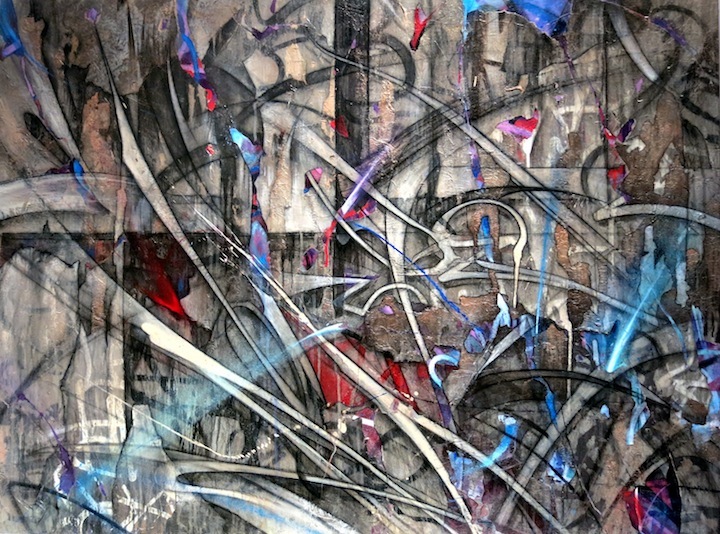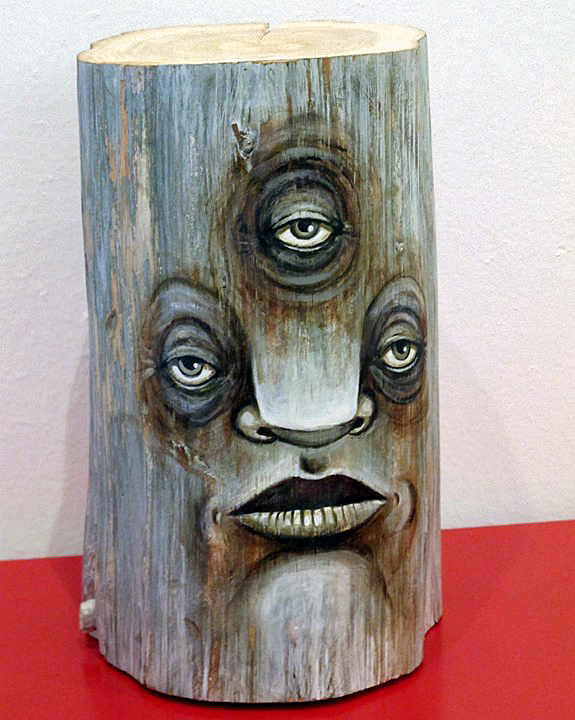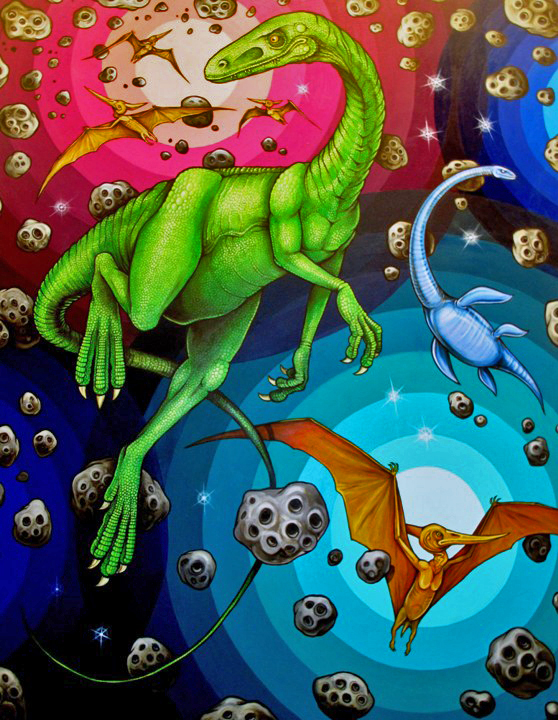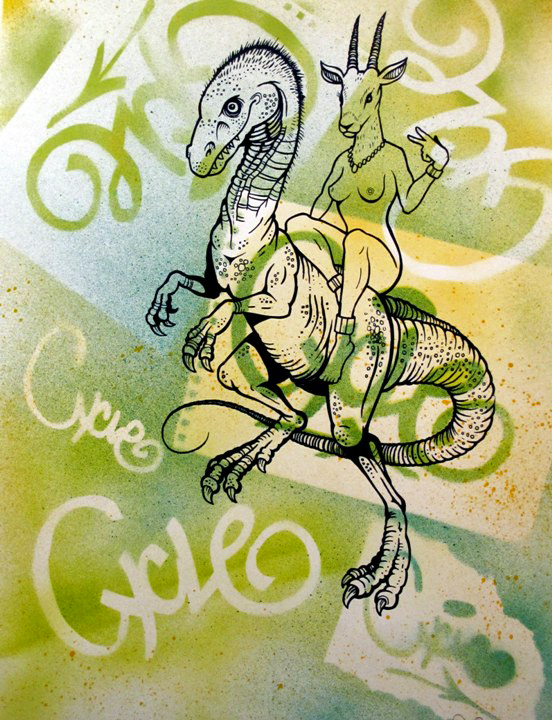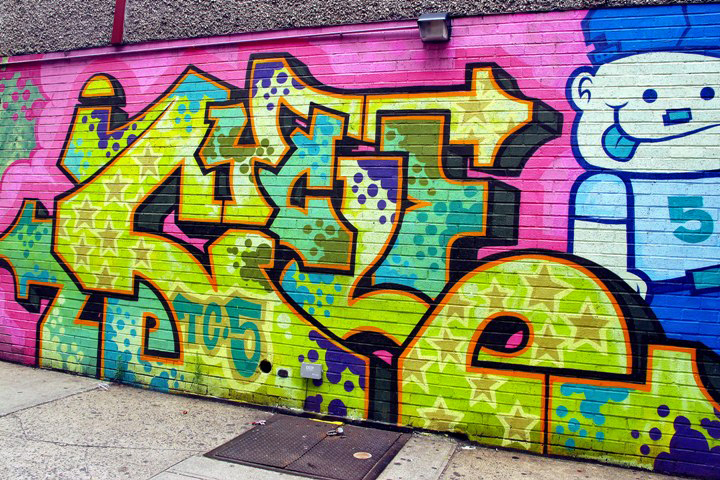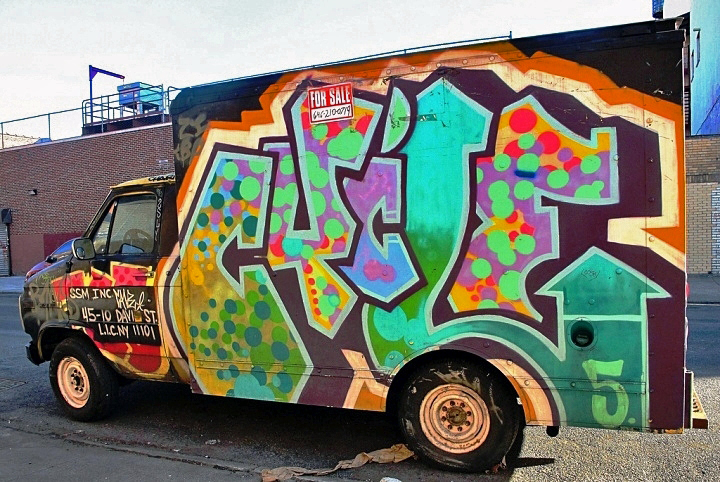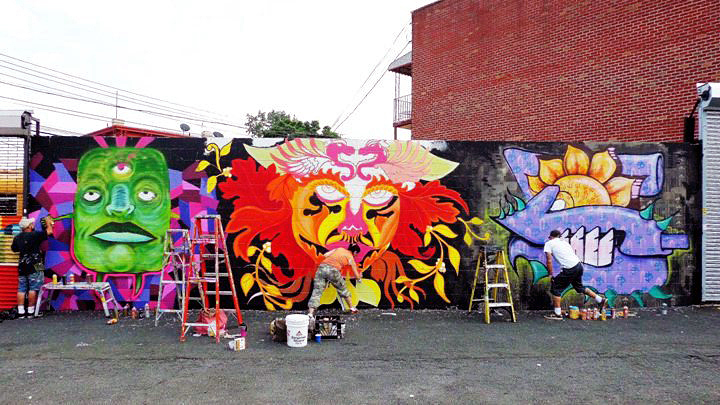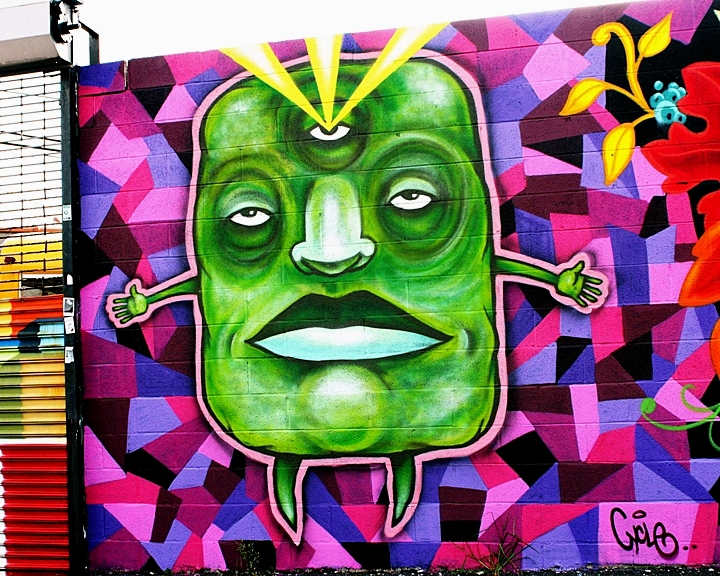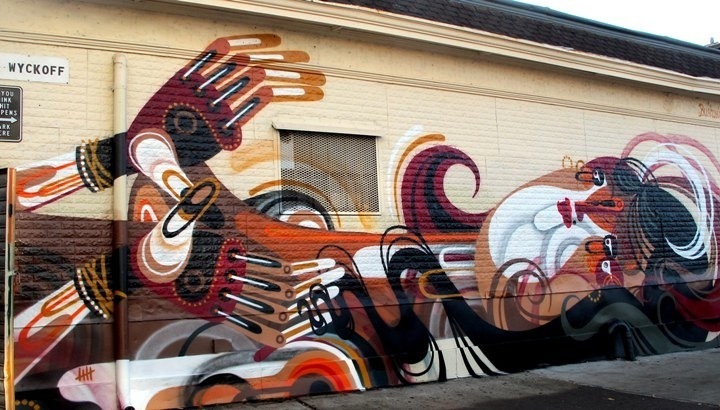
An original member of Melbourne’s legendary Everfresh crew, James Reka graces public spaces in dozens of cities throughout the globe with his splendid, surreal – ever evolving – aesthetic.
When and where did you start getting up?
I started when I was in high school. Back in 1999. I was doing traditional graffiti at the time — just wrecking shit with a bunch of local guys.
Ah! So that explains your name! What stirred you to hit the streets back then?
I was inspired by what I saw catching the train to school every day. And I grew up in the suburbs with the whole hip-hop and skateboard culture. I also loved the thrill of doing something illegal.
We associate your street art with characters rather than with traditional graffiti. When did characters become an essential part of your work?
By 2001-2002 I was already into characters. I always felt happier with characters than with traditional graffiti.
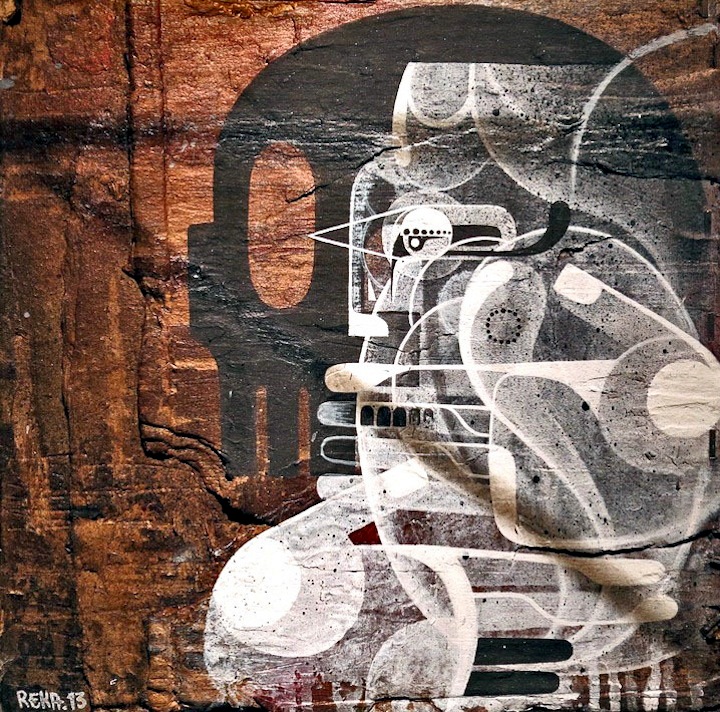
Have you a formal art education?
I consider myself a self-taught artist and I’m proud of that. I did, though, take some courses in graphic design.
Have you any preferred surfaces? Spots?
I like anything with character that already has texture. I love abandoned places, particularly those with character and history.
Any favorite cities?
I’d say New York City and Berlin. I like cities with history.
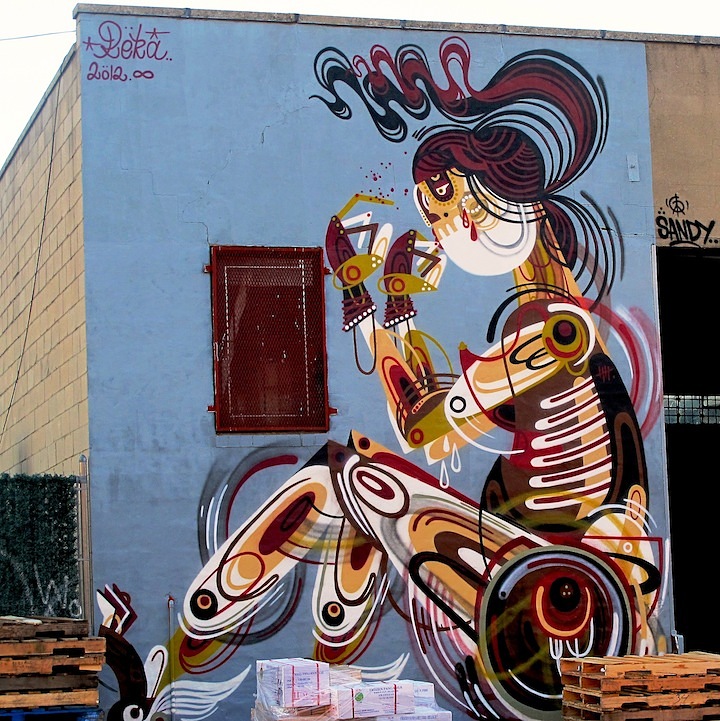
What percentage of your time is devoted to art these days? Any other passions?
Just about all of my time is devoted to art these days. I think about it every second. If I weren’t making art, I’d be making electronic music.
How do you feel about the movement of street art into galleries?
I’m fine with it. Selling my art in galleries provides me with the income I need to fund my projects on the streets.
What about working with brands? Is it something you would do?
Working with brands can taint your image. But I’m okay with it, so long as I believe in the brand.
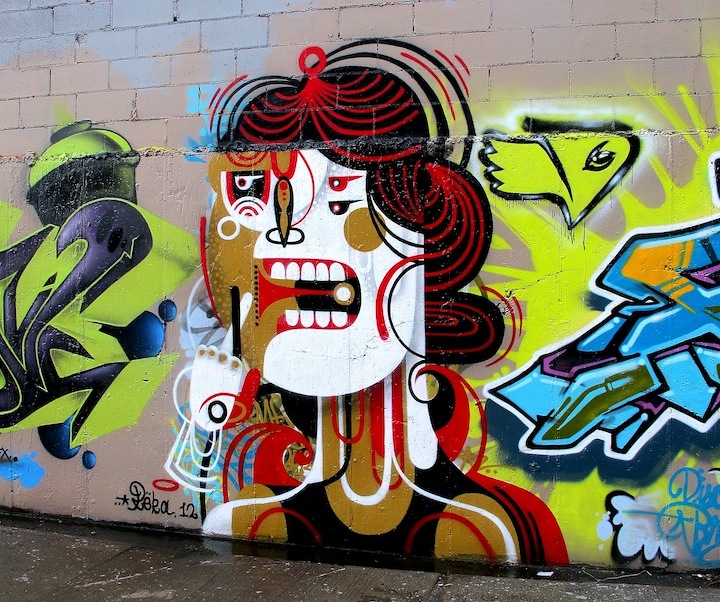
You have exhibited your work in dozens of galleries. We are so glad that you continue to maintain such a strong presence in the streets. What motivates you to do so?
I love surprising people and sharing with them my representation of the human form. When my work is out on the streets, it reaches lots of people and opens their eyes to another way of looking at things. And that’s important to me. I also love working on a large scale and using my surroundings to my advantage.
Have you any thoughts about the graffiti/street art divide?
It’s easier for street artists to get their work into galleries, and it’s understandable that graffiti artists would resent that.
We’ve noticed just how much your art keeps evolving. Your current style and choice of colors are quite distinct from last year’s. Your flow is looser. We’re curious about that!
Well, I’m rarely satisfied. And I’m always trying to expand my vision. My focus now is less about the figure and more within the figure. I find that using natural, earthy colors gives my work a more human element.
How do you feel about the role of the Internet in all this?
Mixed. On the positive side, it’s a great promotion tool, as it makes it easy for an artist to get his work out. On the other hand, it make it all too easy to access information. It’s too easy to know what other artists are doing.
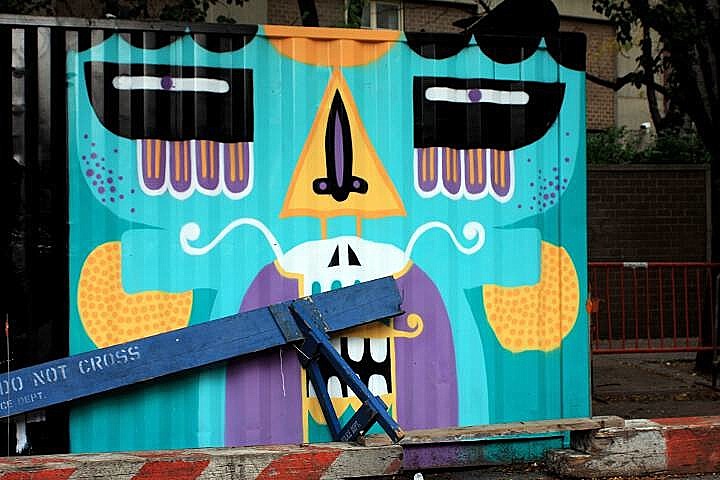
What’s ahead?
Traveling. I’d like to visit Brazil and I’d also like to paint in more rural areas and on larger walls. And I’d like to focus more on fine arts.
Good Luck! And we’re looking forward, of course, to your next visit to New York City.
Photos by Dani Mozeson and Lois Stavsky; the second image is of artwork currently on exhibit at Bold Hype Gallery, 547 W. 27 Street in Chelsea
